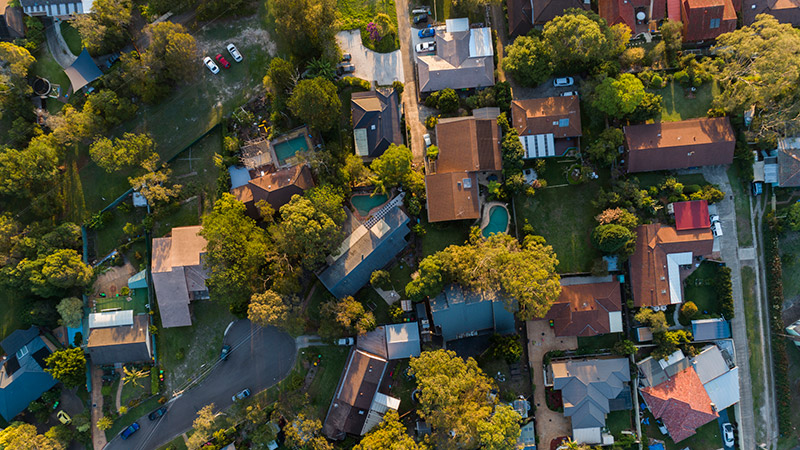[ad_1]
Nearly all of Australia’s property markets posted gains in October, but analysts say downside risks are beginning to emerge, most crucially the possibility of an earlier than anticipated interest rate hike.
Nearly all of Australia’s property markets posted gains in October, but analysts say downside risks are beginning to emerge, most crucially the possibility of an earlier than anticipated interest rate hike.
CoreLogic’s Hedonic Home Value Index showed Australian dwelling prices rose by 1.5 per cent in October, with every capital city and regional market recording growth with the exception of Perth, where the median value dipped by 0.11 per cent.
Brisbane led the nation with 2.54 per cent median price growth in October, followed by Adelaide and Hobart at 2 per cent and Canberra at 1.94 per cent.
Sydney’s median gained 1.5 per cent over the month, while Melbourne’s was up by 0.99 per cent.
Regional NSW led the non-capital city markets with a 2.1 per cent lift, just in front of Queensland at 1.9 per cent.
Western Australia’s regional values posted a 0.1 per cent dip.
CoreLogic research director Tim Lawless said the overall growth was consistent with that recorded in recent months and was indicative of a slowing market.
Mr Lawless said the slowdown in monthly growth was due to a combination of factors, including worsening affordability, higher levels of listings and fewer government stimulus packages available for buyers.
“Housing prices continue to outpace wages by a ratio of about 12 to 1,” Mr Lawless said.
“This is one of the reasons why first home buyers are becoming a progressively smaller component of housing demand.
“New listings have surged by 47 per cent since the recent low in September and housing focused stimulus such as HomeBuilder and stamp duty concessions have now expired.
“Combining these factors with the subtle tightening of credit assessments set for November 1, it’s highly likely the housing market will continue to gradually lose momentum.”
In rental markets, median rents nationally were up 0.7 per cent in October, but most markets exhibited clear easing on an annual trend basis.
That trend was most evident in Perth, which had been one of the strongest performers for much of the year but in the three months to October rents only rose by 0.6 per cent.
Sydney recorded the biggest quarterly rise in rents, up 2.4 per cent, followed by Brisbane, regional Queensland and regional NSW at 2.3 per cent growth.
Rental yields continued to compress, falling to a record low nationally of 3.27 per cent.
Sydney and Melbourne’s gross rental yield sat at 2.4 per cent and 2.7 per cent at the end of October, respectively.
Darwin led the nation with gross yields of 6.1 per cent, followed by Perth at 4.4 per cent, Adelaide at 4 per cent, with Brisbane and Canberra both at 3.9 per cent.
“Although the rate of growth in both housing values and rents are easing, we are likely to see housing prices continue to rise faster than rents over the coming months,” Mr Lawless said.
“If this is the case, rental yields are likely to trend even lower.
“While low yields are not too concerning for investors at a time when interest rates are so low, a rise in interest rates could see a larger portion of investors facing ownership costs that could be higher than their rental income.”
Looking ahead, Mr Lawless said emerging downside risks included worsening affordability, further tightening of credit policies and an earlier than anticipated interest rate hike.
“The trajectory of interest rates will be a central factor in the housing market’s performance over the medium to longer term,” he said.
“Financial markets are already pricing in several rate hikes through 2022 and a growing number of economic forecasters are predicting the first rate hikes to be in late 2022 or early 2023, when inflation is expected to move sustainably within the RBA’s target range of 2 to 3 per cent.
“Higher interest rates have typically been an inflection point for housing markets, with a lift in rates generally corresponding with less growth in housing values or the commencement of a downturn.
“With household debt near record highs, borrowers are likely to be more sensitive than normal to the cost of debt.
“A rise in interest rates is likely to be the cue for the housing market moving into a downswing.”
[ad_2]
Source link

